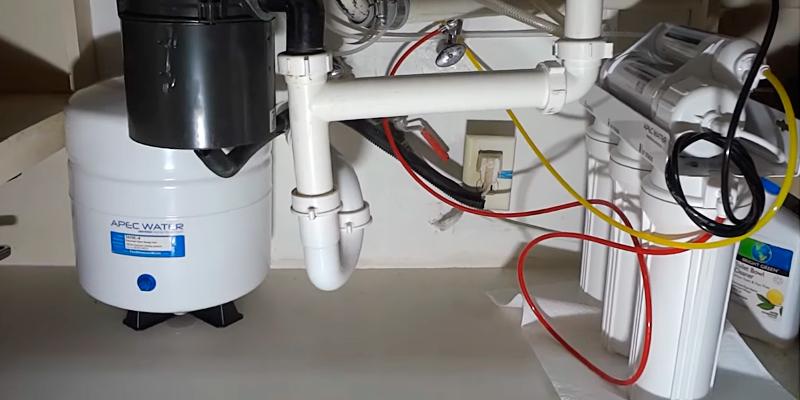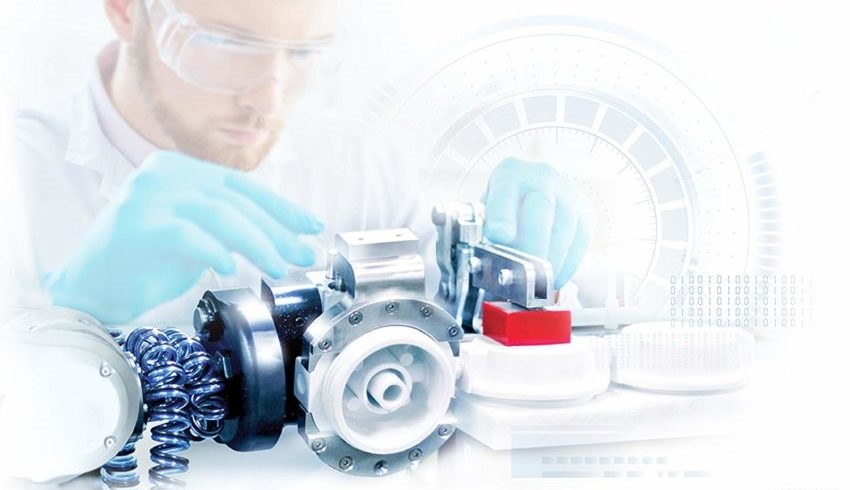The undoubted advantage of such filters is the removal of ions of chlorine, iron, heavy metals dissolved in water, as well as poisonous elements, insecticides and fertilizers. But at the same time ions of magnesium, calcium and other vital elements are filtered. The degree of water purification obtained by reverse osmosis is 98%, industrial units allow to purify water up to 100%. The properties of such water are close to glacial melt water. Some cardiologists believe that to use this water is harmful to the cardiovascular system, for which a sufficient amount of potassium and magnesium enters the body is especially important.
The problem is solved if you buy a reverse osmosis system with a mineralizer that saturates the water with the right minerals and restores the water structure. The APEC ROES 50 installation will give you the opportunity to improve your water quality at home. For a reverse osmosis system for an apartment to work correctly, a pressure of 3-3.5 atm is required in the water supply network. Upper floor residents usually experience the greatest difficulties due to insufficient water pressure. The solution to their problem is to install a special pump.

Which pump for reverse osmosis systems should be purchased?
This pump “presses” water through the membrane. The operating range of the diaphragm is specified by the manufacturer, and the higher the pressure within the range, the higher the water treatment rate. A larger volume is produced per unit of time. The pressure does not affect the water treatment level in this case. The operating pressure of most reverse osmosis systems is 3.5-7 atm. There are those that start to function at a pressure of 2.5 atm. You can determine if you need a pump yourself. For this purpose, the pressure in the water supply system is assessed and compared with the minimum pressure specified by the manufacturer. It may be in the operating range. The presence of a storage tank affects the performance of the filter. The maximum permissible pressure must not be significantly exceeded, as this will shorten the diaphragm life by several times.
Advice on choosing a reverse osmosis system
- You need to decide in advance what degree of cleaning you need. The number of modules that purify water can be up to seven. The simplest reverse osmosis system contains three pre-filters, a membrane and a carbon filter for the finish. In the six-module reverse osmosis system, a mineralizer is installed up to the carbon filter. In an even more complex design, a bioceramic activator has been added, responsible for restoring the natural water composition. In other words, five modules are responsible for complete treatment and two modules restore the necessary water quality.
- If the place under the washing is limited, it is recommended to choose a reverse osmosis system with a compact built-in tank for purified water. The water contained in the tank is sufficient for a family of five to six people. Of course, regardless of the tank volume, it is convenient if the tank is filled quickly. This is especially felt when cooking for a large company.

If the family is large and guests come to you often, you need a filter with a capacity of 5 liters per hour. The rate of water intake is influenced by the design of the reverse osmosis filter and the pressure in the water supply system. The capacity increases in direct proportion to the pressure and less water is used to produce a liter of purified water. The pump allows the RO pressure to increase, otherwise the water that has passed the filters will accumulate too slowly in the tank and part of the water will flow into the drain. So RO system installation can help you solve a lot of problems of different types.




